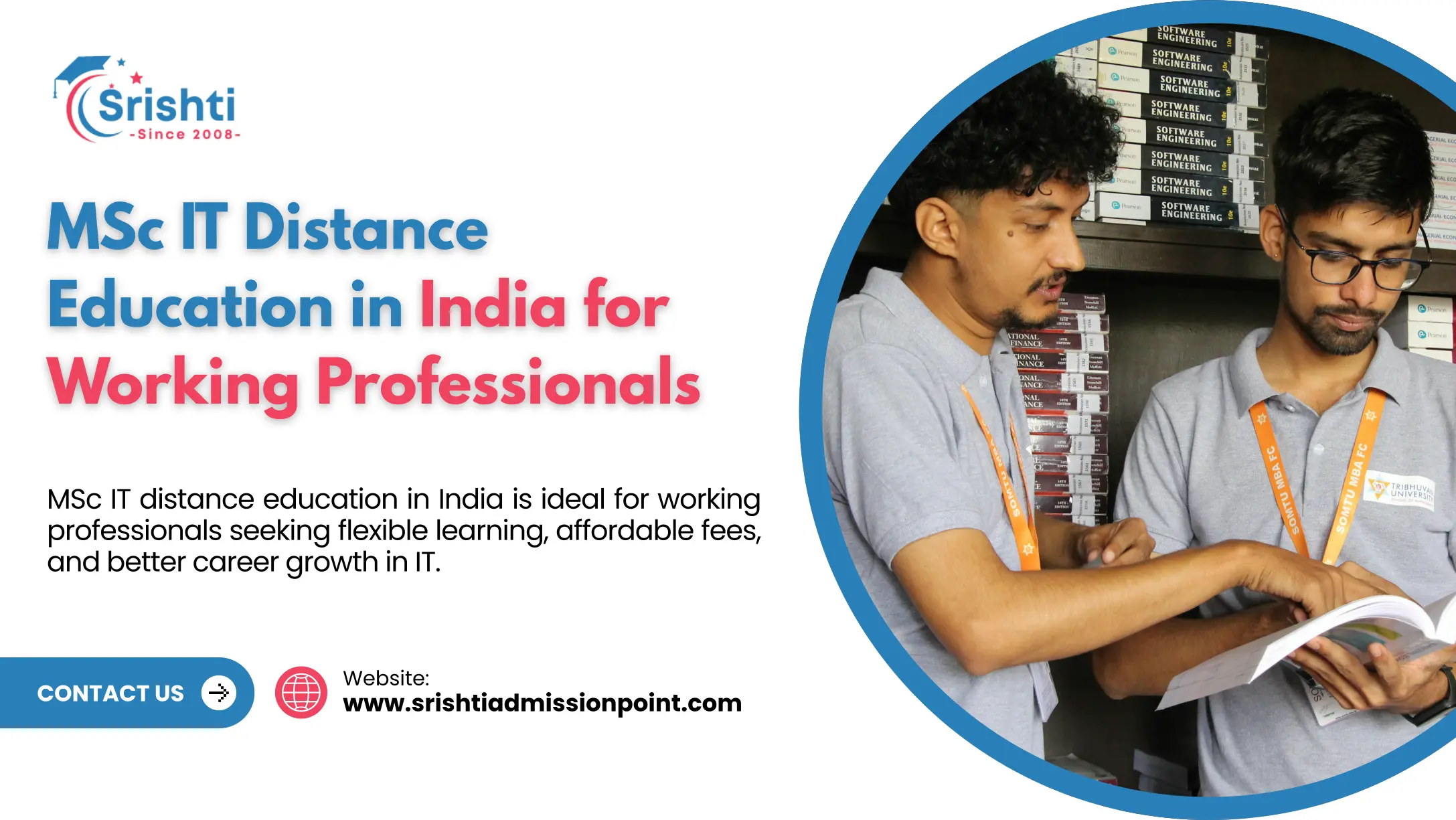
Admissions into the Master of Business Administration can be such a transformational journey at the Srishti Admission Point. It opens career avenues and develops professional skills in you. Yet, the admission process can be taxing at times. Here's an all-inclusive guide to learn everything you need to know on the admission to any MBA program, application procedure, timelines, and tips for success.
1. How to Get Admission in MBA
MBA admission is done with proper planning and understanding of the various stages of the application procedure. First, it is essential to establish whether one is eligible for admission. Usually, most graduate schools for an MBA require a bachelor's degree from any accredited college or university. However, aside from that requirement, many graduate schools also consider an applicant's work experience, his or her good academic record, and leadership potential.
Researching Programs:
Start with searching for different kinds of MBA programs. First, search for Correspondence MBA, Distance MBA in Delhi and the like to find one that fits your career goals and interests. Expert Academic Counselors at Srishti Admission Point can help you to choose the best fit for your requirement. Consider factors as under:
- Specializations: Look for the specializations like Marketing, Finance, Operations or Entrepreneurship by the program that is available to one's interest the most.
- Accreditation: The program should be accredited by a recognized body such as AACSB, AMBA, or EQUIS, to confirm that it will be of quality.
- Format of the Program: Select a full-time, part-time, online, or distance learning MBA depending on your current involvements.
Preparation of Documents
Now that you narrowed down your options to 2-3 programs, gather the documents you'll be required to have:
- Academic Transcripts: Provide evidence of your earlier academic achievements.
- Resume: Offer only essential work experiences, skills, and achievements.
- Recommendation Letters: Get your recommendation letters from professionals who can recommend your abilities and potential.
2. What is the Process of MBA Admission?
The MBA admission process can be broken down into several key steps:
- Researching Programs: Identify the MBA programs, including MBA Distance Course options available that suit your goals. Find information on curriculum, faculty, and alumni success stories. Resources include ranking websites as well as forums where you can research from feedback from current students.
- Prepare for entrance exams: Most colleges require standardized tests, such as the GMAT or GRE. Spend time preparing by utilizing study guides, getting into prep courses, or joining study groups. These tests are important because often they are a major portion of the evaluation process.
- Assemble the documents needed: These include your academic transcripts, resume, letters of recommendation, and a personal statement outlining your goals and reasons for wishing to earn an MBA.
- Submit your applications: Ensure that all of your application forms have all the documents submitted on or before the set deadlines. Care with attention to details in your application to avoid mistakes that typically look worse than they would have been intended to.
- Attend Interviews: In many programs, the final selection might require an interview. Prepare adequately with common questions and ensure you can articulate your goals clearly. Conduct mock interviews several times to make you feel more confident.
- Get Admission Decisions: Take some time after submitting your applications before waiting for decisions from the Schools. Usually, the schools communicate their decisions to applicants weeks and sometimes months after the deadline for application.
3. When Does MBA Admission Begin?
Knowing the timeline for MBA applications has helped its applicants prepare. Most schools have already set application acceptance windows. It is said that the cycle begins in the fall, although the application deadlines are spread throughout late fall to early spring for the next year.
- Round 1: Opening times for applications happen very often in summer and deadlines usually fall around September or October.
- Round 2: This round happens generally in December to January.
- Round 3: Some programs accept applications as late as March or April, and applicants are competing with the pool of earlier applicants.
Application Strategy:
Applying in the earlier rounds may improve the admission prospects because there are plenty of openings at schools. Moreover, early applicants would be able to access the resources from the school and financial aid packages.
4. How to Get MBA Admission Without an Entrance Exam
Actually, many students wonder whether it is possible to enter an MBA without entrance exams. The answer is yes, but of course, only in a few institutions, especially for distance or part-time study.
Other Acceptance Criteria: Work experience. In some places, really long work experience, usually in leading or managing positions, can replace entrance test scores.
Academic Performance: Strong academic record at undergraduate studies helps build a much stronger application.
Personal Interview: In some programs, interviews can predominate test scores as a means of assessing fit and motivation for candidates.
When looking into entry into an MBA without entrance exams, research into institutions that offer direct admission schemes. Institutions may have alternative entry routes, such as a foundation course or a preliminary assessment determining whether you are prepared to take the curriculum in your MBA. At Srishti Admission Point, we guide students in finding the programs that best suit their interest.
5. Can You Get Direct Admission in MBA?
Yes, direct admission is possible through MBA programs for many institutions, particularly distance learning and part-time courses. The opportunities will be specifically suitable for those candidates who do not have the best test scores, but they have relevant work experience or skills.
Colleges Offering Direct Admission :
Research those colleges which announce direct admission routes particularly.These colleges have streamlined procedures; in some cases, they may ask for:
- An interview with the candidate personally.
- Presents a statement of purpose written coherently stating career objectives.
- Academic records from previous institutions that show promise.
Pros and Cons:
Although it may be faster to get admitted directly, you have to compare the pros with cons since, after all, you may not receive financial aid or even a scholarship.
6. MBA Admission Process: Stepwise
The entire process of the MBA admission process can be handled step by step. Here is how you can do it:
Step 1: Research Programs
First of all, fix the programs that fit your chosen career objectives. Surf college websites, attend webinars, and seek current students or alumni. Use social media platforms and professional networks like LinkedIn for insights. Srishti Admission Point can narrow down the best options based on your preferences.
Step 2: Prepare for Entrance Exams
If needed, enroll to sit the GMAT or GRE and develop a study plan. Take prep courses and use as many other study materials as you can, and even sit through a few practice tests to get familiar with the format that the test assumes.
Step 3: Obtain Documents
Gather your academic transcript, draft your resume, and solicit any letters of recommendation that you require. Simply ask professional contacts as well as former professors to write to you in recommendation. Ensure that your resume showcases your skills in relevant areas to the scholarship that you are applying for, as well as whatever other relevant and positive work experience, volunteer work, or other activities that you possess.
Step 4: Personal Statement
Clarify why you want to pursue an MBA and what you aspire to achieve. Write an excellent personal statement that communicates how this program will serve your goals and aspirations.
Step 5: Submission
Fill out each application carefully, upload all documents correctly before the deadline, and tailor applications to each program's specific requirements.
7. Key Points to Remember for MBA Admissions
Plan ahead: Give yourself a long period in which to prepare for the exams to be undertaken, prepare documents, and go through submissions. This will reduce your stress levels, and you can give your best.
Do good research: Understand what each program offers uniquely, what it requires, and what will set one apart from the rest. With this information, you will know exactly how to frame your applications.
Network: Connect with students at the universities to which you are applying and their recent alums for advice and perspective. Networking also unlocks mentorship through the process.
Be Yourself: In your personal statement and interviews, let your authentic self shine in detailing your reasons and goals. Admission committees respond well to authenticity, and it can make an applicant truly stand out.
Stay on Track: Create a checklist for all the tasks and deadlines associated with each application to avoid something falling through the cracks and staying on top of things.
Conclusion
Embarking on an MBA journey is a significant step toward advancing your career and expanding your skill set. By understanding the admission process and preparing adequately, you can navigate this journey with confidence. Remember, the right program, whether it’s a Correspondence MBA, Distance MBA in Delhi, or an Online MBA Course in Delhi, is out there for you. With the assistance of Srishti Admission Point, you’ll find your path to success in the world of business.
Recent Post









